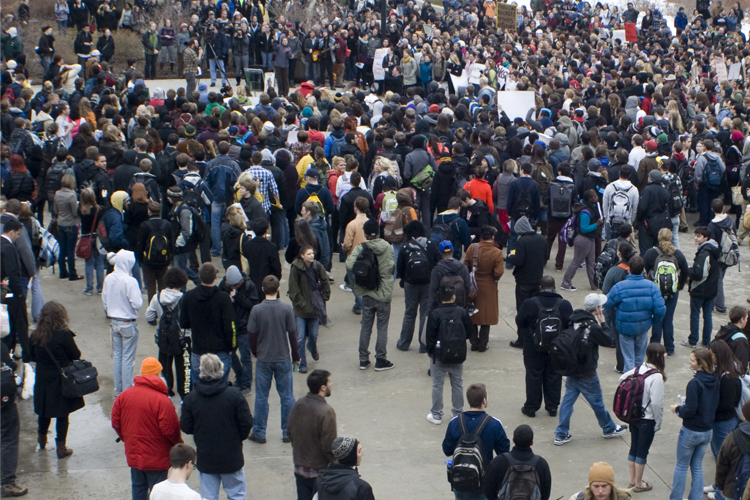Care, Respect and Expression
At the University of Wisconsin-Milwaukee, we honor the right to free expression while showing respect and caring for our diverse community.
On this website, you’ll find information on the basics of free speech, and students’ rights and responsibilities. You’ll also learn more about harassment and discrimination, and find ways to fight bias and report an incident to UWM. Speak up, get involved and seek out resources for support. This is your campus and community.
Learn more on civil discourse and free speech through UW System’s Civil Dialogue Project.

Campus Speech
As a large public university located in a culturally rich city, UWM will always be a forum for the free exchange of ideas — even when those ideas challenge our thinking in unsettling ways. Civil discourse is critical to learning and intellectual growth.
Harassment & Discrimination
Although UWM fully supports free expression, harassment and discrimination have no place on our campus. These behaviors can be harmful to individuals and our community. Learn more about how to report an incident and obtain support.


Rights & Responsibilities
As a student enrolled at a public university, you have the right to free speech and free expression. However, if your behavior crosses the boundary of what is acceptable in civil society or threatens others, you will be held accountable.
Latest FAQs
-
I’m worried that a protest might make it difficult for me to get to class or enter campus buildings. What can UWM do to prevent that?UW System Administrative Code Chap. 18 includes requirements for non-academic use of UWM’s lands. Protests cannot: Explore UWM’s Free Speech, Rights and Responsibilities website to learn more about free speech, including First Amendment protections and exceptions.
-
Why are UWM PD officers at campus assemblies and protests?The UWM Police Department may monitor assemblies and protests on campus to ensure that they are not disrupted and that attendees are safe. UWM PD intervenes only when there is a violation of state code or law. UWM PD will frequently connect …
-
Am I allowed to chalk on campus?Similar to posting flyers on campus bulletin boards, expression through the use of chalking on campus sidewalks is protected within reasonable regulations. Conditions imposed on campus sidewalk chalking are put in place to ensure that permanent damage is not caused …
